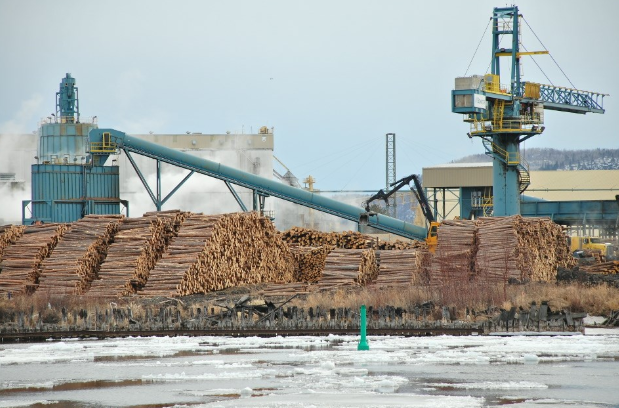THUNDER BAY — Anxiety about tariffs still looms over the forest industry, despite the Canada-U.S. trade war being delayed 30 days.
“There's a great deal of concern. The 30-day reprieve is welcome, but effectively, it means nothing until it's been resolved,” said Ian Dunn, chief executive officer of Ontario Forest Industries Association.
Dunn said that Ontario trades 97 per cent ($7.7 billion) of its lumber products with the U.S. and a 25 per cent tariff would have a $2 billion impact.
“Look what happened during the pandemic when there was a shortage of supply to the American market because there was reduced staffing at the mills and a reduced supply of lumber into the market,” said Dunn.
“A huge demand for housing renovations and new detached homes in the United States. The price of lumber per 1,000 board feet, it went up to like $1,600, and usually, we see $500 to $600 per 1,000 board feet. So, it went beyond what anyone had seen before in the lumber market.
“If there is a 25 per cent tariff, an additional tariff on the border for lumber, what we would see is likely more lumber flooding the domestic market.
He stated the industry is “not new to trade disputes.”
Trading of softwood lumber has been a cause for constant contention between Canada and the U.S., he said.
Lumber shipped to the U.S. already has a 14.5 per cent duty attached, said Dunn, and another 25 per cent would raise the cost of importing lumber into the U.S. to 39.5 per cent.
“If there was a tariff in place, ultimately what that would mean is higher costs for the American consumer. Our companies would largely pay the tariff at the border, but there would be some expectation that the customers would have to pull the slack,” Dunn said.
“So, I think the Trump administration understands that and will continue to use this threat as an opportunity to achieve their political and national security goals.
Dunn said as the trade war carries on importers in both countries will opt to find cheaper markets.
“There will be a breaking point, and what we've seen over the years is a quadrupling of offshore imports from lumber. So instead of sourcing lumber from America's closest neighbour and trading partner, more lumber is being sourced from Brazil, Germany, Sweden. And that's quadrupled over the last 8 years,” Dunn said.
He anticipates a decline in the pulp and paper mill sector and the sawmill industry as well.
“Tariffs are already and duties are already having an impact on the region. Sawmills in the area have had a reduction of shifts. There have been layoffs. In other regions of the province, there have been closures in the sawmilling industry. There's also been the idling of very important anchor mills in Terrace Bay and Espanola,” Dunn said.
“I think in a lot of respects the damage has already been done. If you're a multinational company looking to invest your dollars, you're going to sense a lot of uncertainty in the marketplace right now. You would lose a lot of confidence in the Canadian-U.S. relationship,” he added.
“I think of the small family-run members in companies across the province, the small operators, I'm sure they've lost a lot of confidence. It is going to have an impact across the province.
Dunn stated that Northwestern Ontario is fortunate to have two anchor mills with Thunder Bay Pulp and Paper, and Dryden Fiber; however, in the northeast, “we don't have as much pulp and paper capacity.”
“That capacity has been consolidated and rationalized and gone to other jurisdictions,” Dunn said.
Shifting into new markets overseas is also a challenge, according to Dunn.
He said Ontario is “essentially landlocked.” Some companies do ship their wood overseas but at a heftier cost.
“It's expensive because you have to handle the product more, and the supply chain isn't as developed,” said Dunn.
He noted that there are some opportunities to keep the lumber industry afloat, including updates to the Ontario building code to enable mass timber construction up to 18 stories.
"It's a small market segment right now, but it will grow over time,” said Dunn.
The lumber industry has already begun moving into new markets within Canada’s borders with investments in the bioeconomy.
“There are really exciting opportunities in the energy space. So, for biomass fuels, and syngas. There's a project happening around Lake Nipigon Forest, close to the Thunder Bay region, and renewable diesel and sustainable aviation fuel. There are all kinds of alternative products that can help the province achieve some energy security,” said Dunn.
“We've seen some really amazing investments in the auto sector, the battery sector in the GTA in Southern Ontario, Southwestern Ontario, and we want to attract billions of dollars into the bioeconomy, the forest bioeconomy into Northern Ontario and Northwestern Ontario,” he added.



